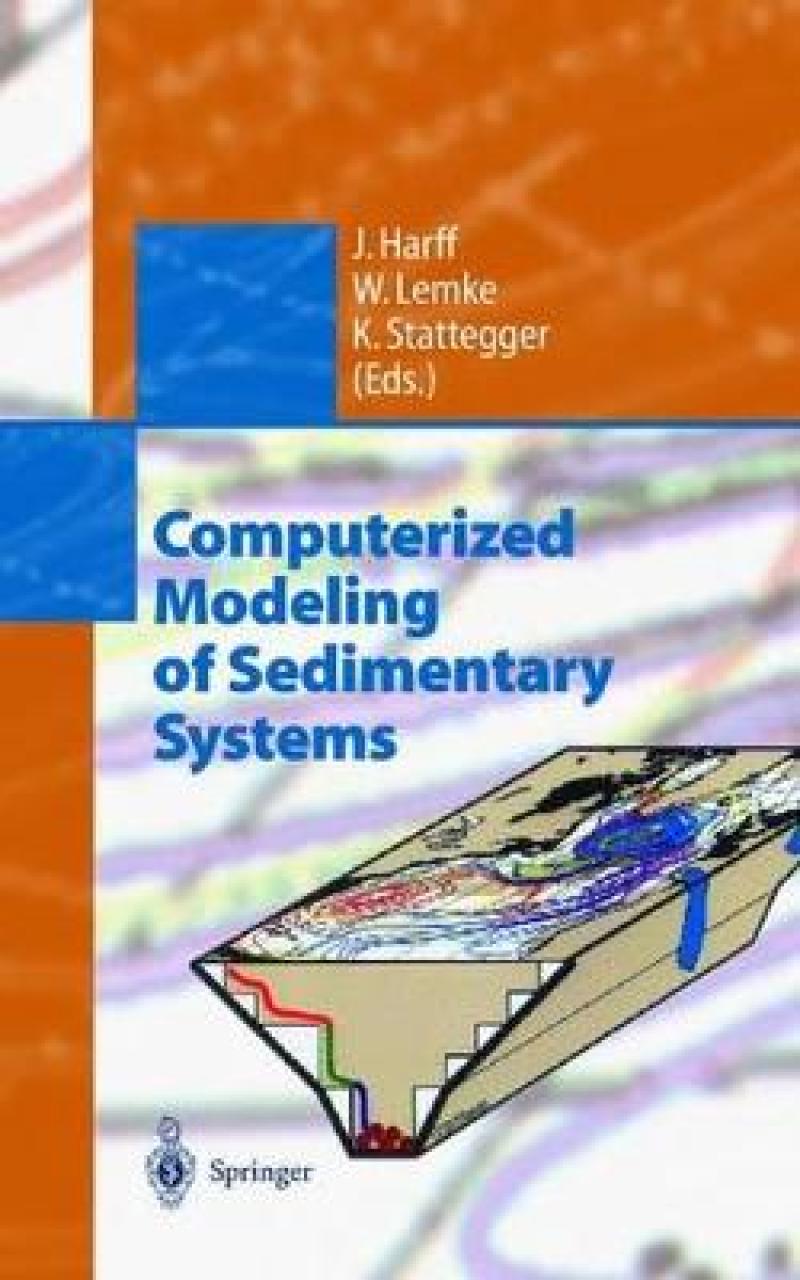Computerized modeling is a powerful tool to describe the complex interrelations between measured data and the dynamics of sedimentary systems. Complex interaction of environmental factors with natural variations and increasing anthropogenic intervention is reflected in the sedimentary record at varying scales. The understanding of these processes gives way to the reconstruction of the past and is a key to the prediction of future trends. Especially in cases where observations are limited and/or expensive, computer simulations may substitute for the lack of data. State-of-the-art research work requires a thorough knowledge of processes at the interfaces between atmosphere, hydrosphere, biosphere, and lithosphere, and is therefore an interdisciplinary approach.
Les mer
Computerized modeling is a powerful tool to describe the complex interrelations between measured data and the dynamics of sedimentary systems. Complex interaction of environmental factors with natural variations and increasing anthropogenic intervention is reflected in the sedimentary record at varying scales.
Les mer
Lagrangian Modeling Techniques Simulating Wave and Sediment Dynamics Determining Sand-Body Equilibria.- Modeling Sediment Resuspension in Coastal Areas.- Model Simulation of Temporal Variability of Suspended Matter in the North Sea.- Icebergs in the North Atlantic: Modeling Circulation Changes and Glacio-Marine Deposition.- Numerical Study of Glacial and Meltwater Global Ocean Thermohaline Conveyor.- SEDLOB and PATLOB: Two Numerical Tools for Modeling Climatically Forced Sediment and Water Volume Transport in Large Ocean Basins.- Digital Data base of Modern Evaporites and Their Predicted Distribution Based on Results from an Atmospheric General Circulation Model Simulation.- A Coupled Physical-Chemical Model for the Western Baltic.- Field and Numerical Studies of Near-Bed Aggregate Dynamics.- Possibilities of Cause-and-Effect Simulation in the Study of the System Climate-Ocean-Sediments.- Climate Cycles and Climate Transitions as a Response to Astronomical and CO2 Forcings.- Milankovitch Cycles and Sequences: Two Different Stratigraphic Tools.- Scaling and the Palaeogeographical Distribution of Stratigraphic Events.- Quantitative Stratigraphy of Sedimentary Sequences.- Use of Sedimentary Simulations for Dating Sequence Boundaries and Measuring the Size of Eustatic Sea-Level Changes: an Example from the Neogene of the Bahamas.- High-Resolution Forward Stratigraphic Modeling of Ca2-Carbonate Platforms and Off-Platform Highs (Upper Permian, Northern Germany).- Validation of Sediment Accumulation Regions in Kansas, USA.- Methods Used in a Mass-Balance Study of Holocene Sediment Accumulation on the Southern North Sea Coast of Germany.- Sedimentological Control Parameters and Compaction — a Complex Model of Porosity Distribution in Holocene Muds of the Arkona Basin (WesternBaltic).- Classification of Compositional Data Using Mixture Models: a Case Study Using Granulometric Data.- Statistical Analysis of Dispersion and Geochemical Patterns of Sedimentary System in the Northern Shelf of the South China Sea.- Computerized Modeling of Rock-Varnish Dating.- Risk, Uncertainty and Priorities — Quantitative Models.
Les mer
Wide spectrum of application Numerous case studies
GPSR Compliance
The European Union's (EU) General Product Safety Regulation (GPSR) is a set of rules that requires consumer products to be safe and our obligations to ensure this.
If you have any concerns about our products you can contact us on ProductSafety@springernature.com.
In case Publisher is established outside the EU, the EU authorized representative is:
Springer Nature Customer Service Center GmbH
Europaplatz 3
69115 Heidelberg, Germany
ProductSafety@springernature.com
Les mer
Produktdetaljer
ISBN
9783540641094
Publisert
1998-12-04
Utgiver
Vendor
Springer-Verlag Berlin and Heidelberg GmbH & Co. K
Høyde
235 mm
Bredde
155 mm
Aldersnivå
Professional/practitioner, UP, P, 05, 06
Språk
Product language
Engelsk
Format
Product format
Innbundet

